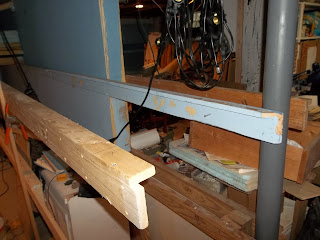In the last blog Modeling Interest - Locomotives, we discussed the type of locomotives the modeler wishes to replicate. In this blog we will discuss rolling stock of interest.
Rolling Stock.
Rolling stock
is equipment which is used by the railroad to move freight and
passengers from place to place, or is used to maintain operations. It
falls into two service categories: revenue and non-revenue. Revenue equipment includes passenger equipment, boxcars, hoppers, flat cars, gondolas and
other specialty equipment. Non-revenue
equipment includes cabooses, maintenance of way, and company supply and
service equipment.
Ownership
Rolling stock used by railroads would be primarily owned by the principle railroad. Railroads determined the number of cars by type based on the ongoing needs of their customers. The document below is a Northern Pacific analysis of flat cars required for ownership. Notice the bottom line required for ownership to protect loadings, etc is 1954 cars. If the railroad was short cars, additional rolling stock could be available from railroads that interchange with the principle railroad, or the railroad would purchase new or used rolling stock.
Because the WWSL is a short line
railroad with limited finances, it would probably not be able to provide
100% of the railroad cars necessary to meet customer requirements.
Under national car management rules, the WWSL could ask its three
interchange partners (the NP, MILW, and UP) or private
owners (cars available for contractual lease) for cars.
WWSL ownership. I have tentatively set the revenue car presence: WWSL %, OPLC %, STC %, NP - %, MILW - %, the UP - %, private owner %.
Age of equipment
The 1940's and 1950's saw a shaking out of railroad operations. Wages, unnaturally low because of the Depression and War, were quickly catching up in the post war decade, and labor costs were a balance sheet item. The Depression also delayed the replacement of rolling stock. John Nehrich wrote Freight Trains, Choosing the Right Cars, in the April 1992 Mainline Modeler. In this article he reviews the age of rolling stock in service.
|
Period
|
1949
|
1953
|
|
WWI or earlier
|
20
|
|
|
1918-1922
|
12
|
18
|
|
1925-1027
|
27
|
19
|
|
1928-1930
|
8
|
8
|
|
1931-1935
|
2
|
2
|
|
1936-1937
|
5
|
5
|
|
1938-1941
|
7
|
7
|
|
1942-1945
|
7
|
7
|
|
1946-1949
|
12
|
12
|
|
1950-1953
|
|
22
|
Nehrich notes
several things. 1) Freight car construction during the Depression
plummeted to 1% of previous levels. 2) Rebuilding of existing freight
cars with steel understructures occurred to extend service life of
existing cars. 3) Freight trains of the 1950s were mainly composed of
cars originally built in the 1920s, and 4) in the period 1946 - 1963
2/3rds of the total 1,515,139 freight car fleet in service was newly
built.
WWSL 1950's rolling stock age determinations.
- Class 1 railroads will have primarily newer equiptment - based on their revenue capabilities.
- WWSL will have older rolling stock purchased through used equipment dealers with some new equipment purchased.
- OPLC and STC will have the oldest equipment, equipment which had been recycled for newer operational requirement or equipment purchased through used equipment dealers of class 1 or class 2 railroad equipment.
See
Rolling Stock references pages for specific railroad rolling stock ownership information used by the WWSL.




















